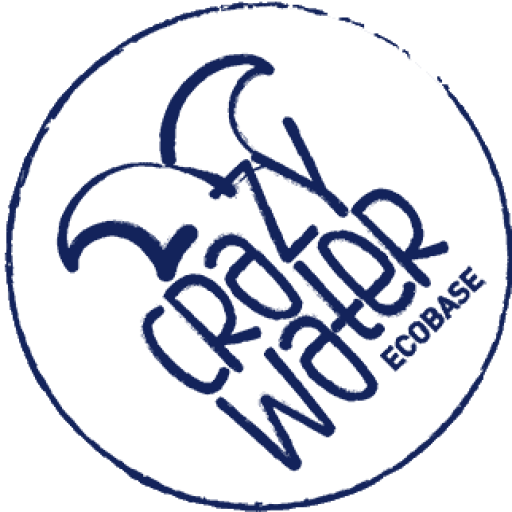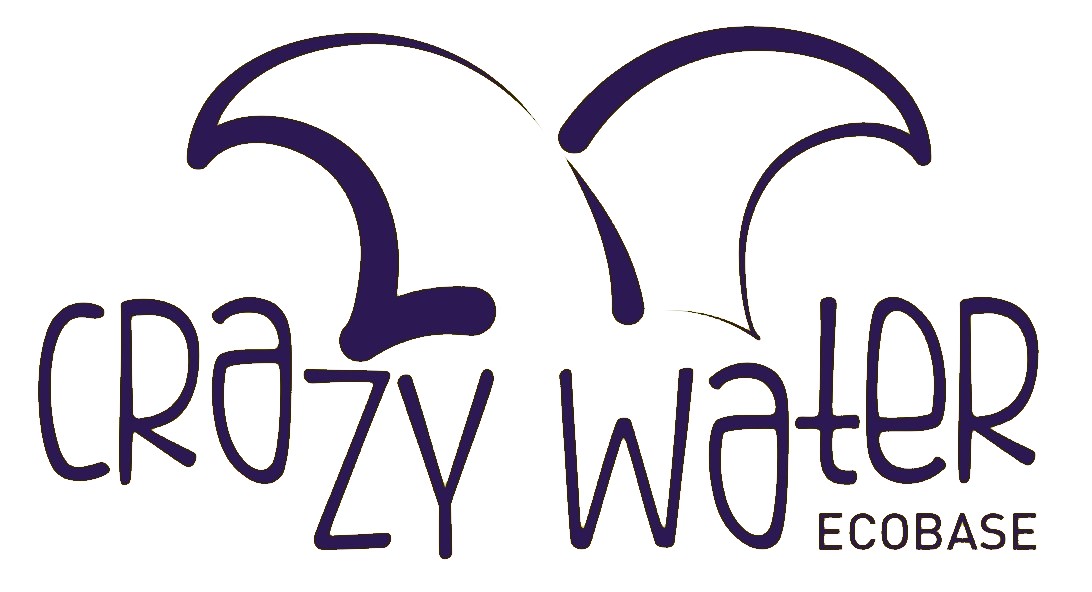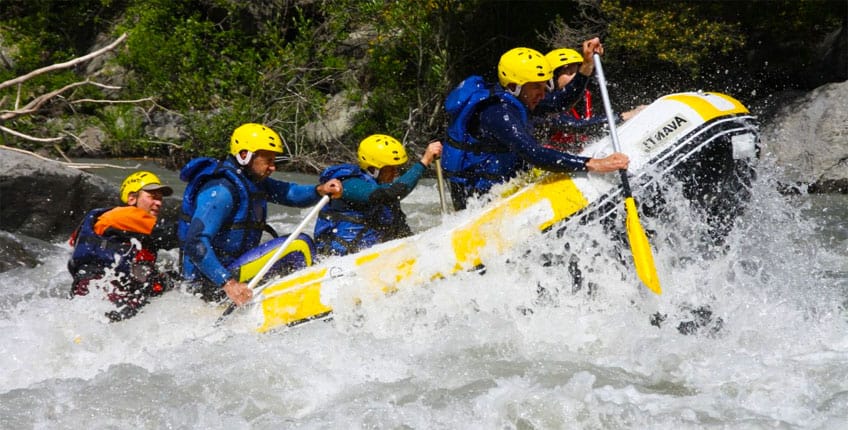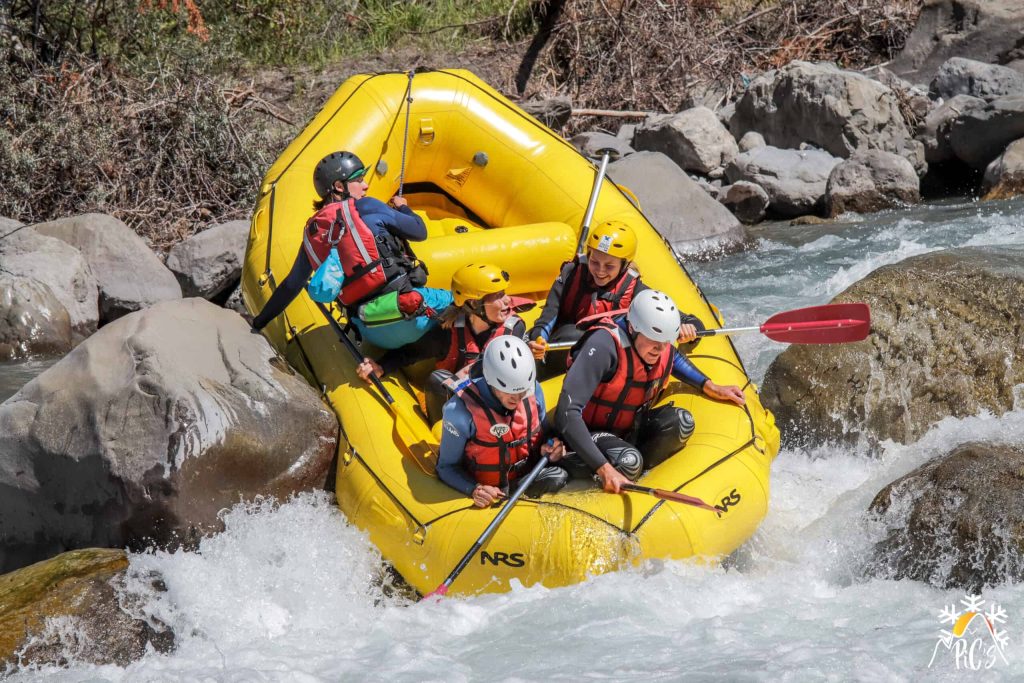
What is Rafting?
Objective to know everything about Rafting! Rafting is the activity that is practiced on a Raft. It's a unsinkable inflatable boat which allows you to go down rivers with rapids, in a safe and fun way. The Raft can accommodate 2 to 10 people. The crew sits on the edge of the raft, in pairs, one behind the other. In the back seat of the boat is the monitor, who directs and hosts the Rafting descent.
Summary – Everything you need to know about Rafting
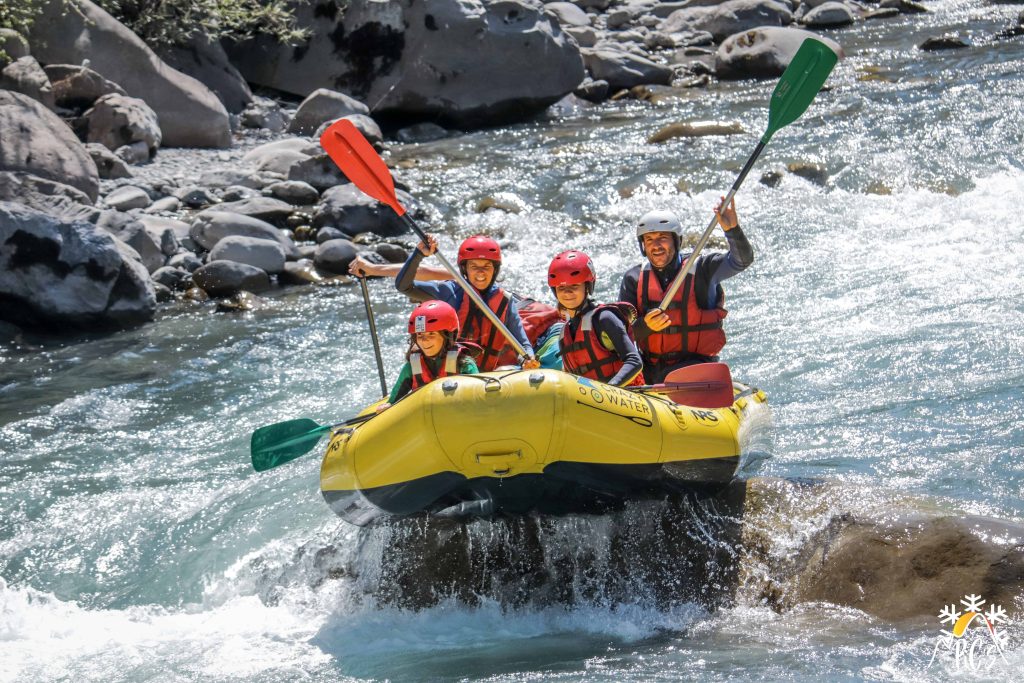
Everything you need to know about Rafting: the word and its origin
What does Rafting mean?
Rafting is an English word which means raft, raft down the river. The first rafts were made of wood.
Every year on the Durance river, in the Hautes Alpes, a traditional rafting event takes place where people go down the river with wooden log boats. Not easy !
What are the origins of Rafting?
The beginning of the modern raft was invented in the United States, by the American military. For its fun and playful side, Rafting has become a sporting and tourist activity. The Raft arrived in France in the 1980s, first on the Ubaye river, in the Barcelonnette valley (04), then on the Isère (38), before being operated throughout France.
Everything you need to know about Rafting: where, for whom and why?
Where to go Rafting in France?
Rafting is practiced in the mountains, where there are rapid rivers. In recent years, you can raft on artificial pools, but you will lose all the charm of nature.
The most famous “Spot” in the Alps is Ubaye in the department of Alpes-de-Haute-Provence 04. There are also the Guil, an incredible river in the Hautes Alpes 05 and also the Durance which is much calmer. These three rivers are found in the Southern Alps.
The most common place for rafting in France is Castelane, in the Gorges du Verdon. It's a beautiful place but the rapids are quiet. We are on a stroll rather than an active descent.
In the Pyrenees, you will find magnificent rivers such as the Aude.
In the Northern Alps, there is Isère, the Dranses which are the best known. Discover our 8 Spots of rivers in the Alps.
Who can do Rafting?
Rafting is a nautical activity exciting! It is suitable for everyone and, in general, participants must be in good physical health, able to swim and ready to take on the rapids. However, the specific criteria may vary depending on the difficulty level of the river and the policy of the whitewater sport base.
Here are some general criteria that are often applicable:
- Age : Participants must generally be of a certain age. At Crazy Water Rafting we start from 5 years old. However, this depends on local regulations and the specific nature of the Rafting descent.
- Physical condition : It is generally necessary to be in good physical condition, as the descent can be physically demanding. Participants must be able to paddle for an extended period of time.
- Ability to swim: Participants must be able to swim 25 meters. Even if you wear a life jacket during the activity, the ability to swim is an important safety measure.
- Health : Healthy individuals are generally permitted to participate, but individuals with pre-existing medical conditions should consult their physician before engaging in this activity and speak to the raft base manager.
It is important to note that the criteria may vary from one whitewater company to another and from one location to another. Before participating in a descent, be sure to check the organizer's specific requirements and discuss any health issues or concerns you may have with them. Additionally, always follow the safety instructions provided by Rafting guides to ensure a safe and enjoyable experience.
Why go rafting?
Rafting allows you to have another experience of the mountain landscape. Thanks to this big boat, you have access to very wild places, by the river. It’s a view of nature that we’re not used to having, on foot or by car.
It's very disorienting, especially in the Ubaye valley, near Barcelonnette. In fact, the valley is very narrow and the raft allows you to discover the bottom of this valley, up to the Serre-Ponçon lake.
Rafting is a mountain sport accessible to everyone!
A rafting trip can be sporty but above all it is fun and playful. Swimming and rock jumping are often on the program.
Everything you need to know about Rafting: the practice in more detail
What equipment for rafting?
A raft is made of PVC or Hypalon material, depending on the range of the boat. At Crazy Water, we have Hyplon rafts, which are much more resistant.
Our rafters (those who practice the Rafting activity) are equipped with 3 or 5 mm neoprene suits. The equipment is complete: pants, jacket and shoes.
To ensure safety on the river, we provide a flotation vest and a helmet meeting European standards. In Ubaye, the standards correspond to those of the upper river.
And finally, to propel ourselves on the raft, we need a single canoe style paddle.
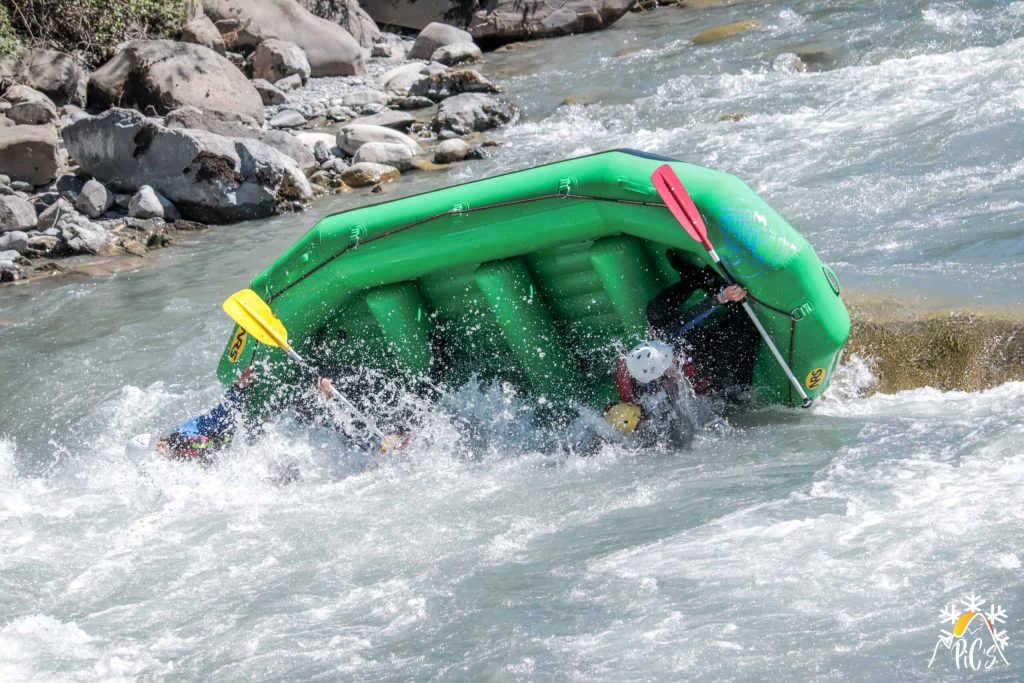
What are the difficulty levels in Rafting?
In white water there are 6 levels of difficulty. The sports river begins in class 4, class 6 is impassable.
On the Ubaye we have all the rapid classes on our journeys.
Class 1: Small calm running current without any difficulty.
Class 2: Small current with a few relatively easy obstacles to cross. Like the Gorges du Verdon or the Durance
Class 3: Strong current with the presence of water movements, larger obstacles to overcome, but which can be seen. Ubaye starts there.
Class 4: The Ubaye and the Guil offer you strong currents and powerful water movements, obstacles which require prior reconnaissance.
Class 5: Very strong currents, very powerful water movements, reserved for experts. This corresponds to the sports course on the Ubaye.
Class 6: Airworthiness limit. Passages almost impossible to cross.
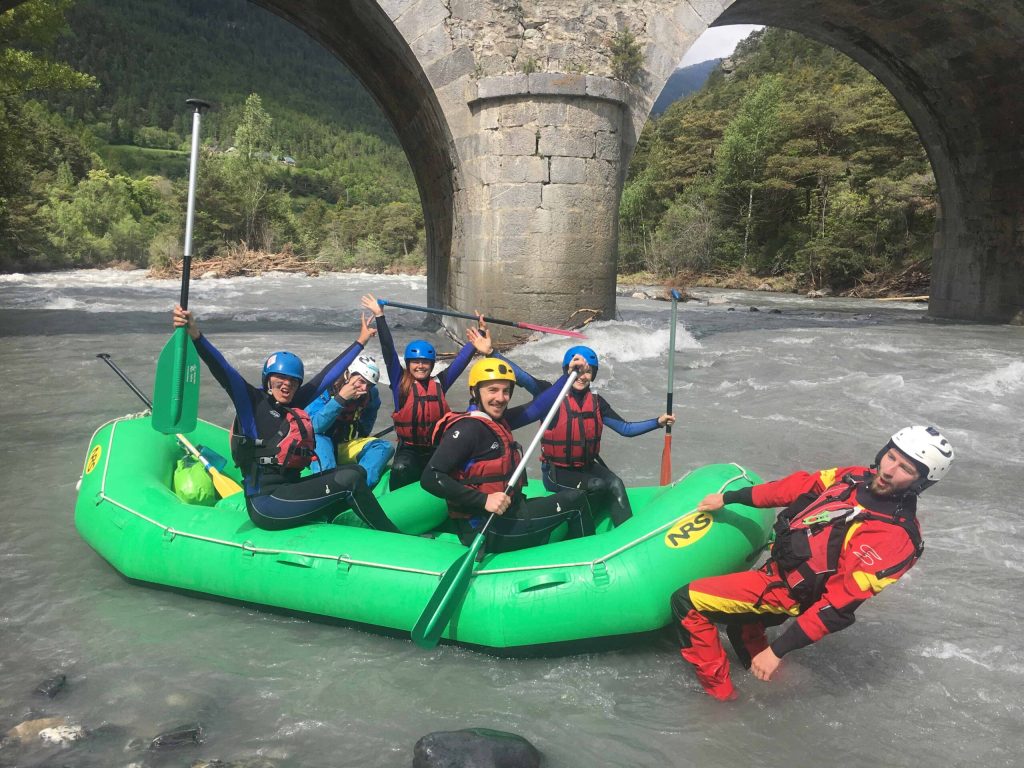
When to go Rafting?
Specific times of year when water conditions are optimal for this activity. Except for tropical countries Rafting is practiced from spring to autumn:
- Spring and early summer: In many regions, spring and early summer are the most popular times for Rafting, especially on the Ubaye. This is often due to melting snow which causes a higher water flow in rivers, creating more powerful rapids and more exciting conditions. However, water levels can vary from year to year depending on weather conditions and winter snowfall.
- Summer : Rafting is also practiced in summer. However, this depends on the river's water source, whether it is fed by snowmelt, summer precipitation, or other factors. We are generally on so-called maneuverable rivers where we have to slalom between the stones.
- Autumn : In some areas, fall can also offer favorable rafting conditions, although water levels may be lower compared to spring. However, the cooler weather and fall scenery can make the experience very enjoyable. In autumn, with the return of the rain, the rivers can become voluminous again.
Local businesses can provide valuable information on the best times for this activity in their area. Every season is great.
Is Rafting Dangerous?
The descent is supervised by an instructor called river guide. He is a state graduate trained to direct, supervise and lead the descent. He can intervene if necessary. Rafting is a mountain activity like skiing. Well prepared and well supervised, the risks are very limited.
What is the best river for Rafting?
Crazy Water is a company bringing together river guides who have explored the planet in search of best Rafting and Kayaking experiences. Given that the Ubaye is the most dynamic and wild river in France, it was natural for us to settle here! The Barcelonnette Valley, also known as the Ubaye Valley, is often considered the Mecca of whitewater sports in France.
Ubaye is undoubtedly the best river in France, even rivaling the Guil. The notable difference is that Ubaye offers sailing opportunities throughout the year, which sets it apart as an exceptional destination for whitewater sports enthusiasts.
